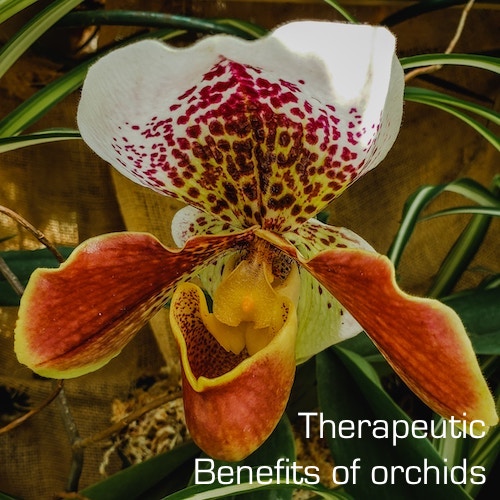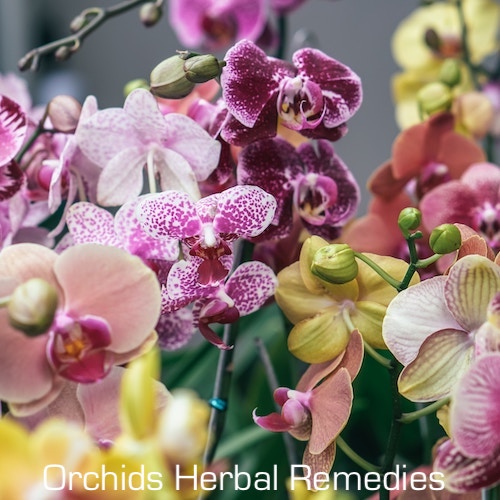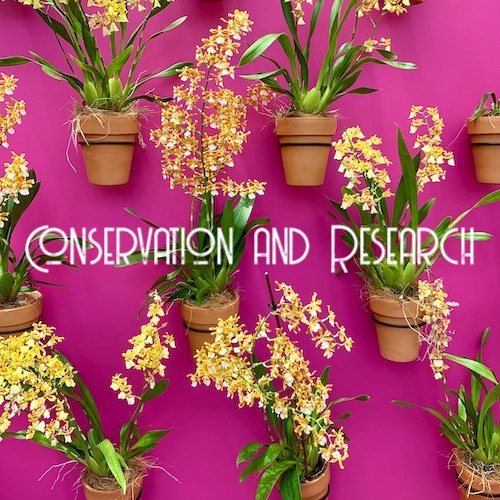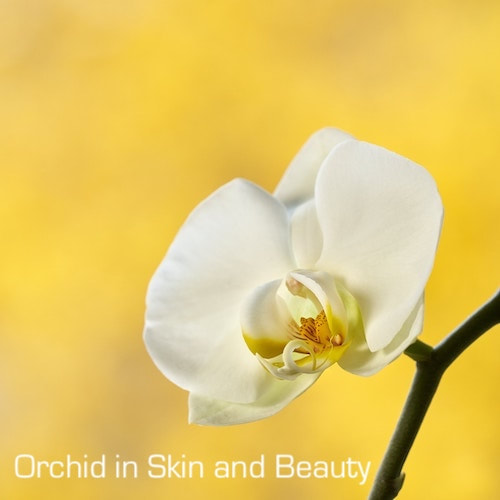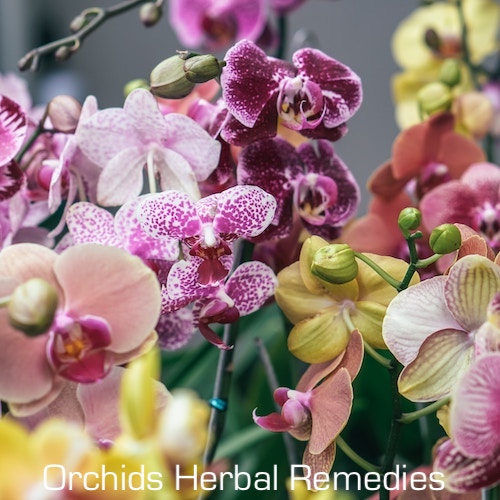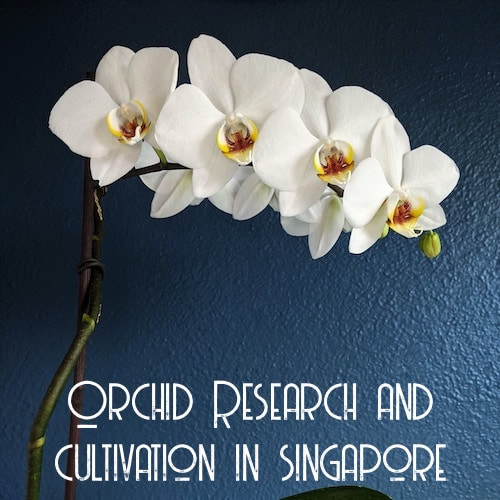Introduction:
The mesmerizing beauty of orchids has captivated people for centuries. These enchanting flowers are not just visually stunning but also possess therapeutic properties that have been revered in Asian cultures for generations. Asia, with its rich biodiversity and ancient healing traditions, is home to numerous orchid species that offer an array of therapeutic benefits. In this article, we will explore the remarkable world of therapeutic orchids in Asia and delve into their diverse applications in traditional medicine and wellness practices.
The mesmerizing beauty of orchids has captivated people for centuries. These enchanting flowers are not just visually stunning but also possess therapeutic properties that have been revered in Asian cultures for generations. Asia, with its rich biodiversity and ancient healing traditions, is home to numerous orchid species that offer an array of therapeutic benefits. In this article, we will explore the remarkable world of therapeutic orchids in Asia and delve into their diverse applications in traditional medicine and wellness practices.
Historical Significance of Therapeutic Benefits
The therapeutic use of orchids in history holds cultural, symbolic, and medicinal significance in various societies. While orchids are primarily known for their beauty and ornamental value, certain species have been used for therapeutic purposes, especially in traditional medicine practices. Here are some historical aspects of the therapeutic significance of orchids:
The therapeutic use of orchids in history holds cultural, symbolic, and medicinal significance in various societies. While orchids are primarily known for their beauty and ornamental value, certain species have been used for therapeutic purposes, especially in traditional medicine practices. Here are some historical aspects of the therapeutic significance of orchids:
- Traditional Medicine: Orchids have been used for medicinal purposes in traditional systems of medicine across different cultures. For instance, in traditional Chinese medicine, certain orchid species, such as Dendrobium spp., have been used for their therapeutic properties. They are believed to have benefits for treating ailments like fever, diabetes, and respiratory conditions.
- Cultural and Symbolic Importance: Orchids have held symbolic value in many cultures throughout history. They have been associated with beauty, elegance, fertility, and strength. In some societies, orchids have been believed to possess spiritual qualities or have been used in rituals and ceremonies to bring good fortune or ward off evil spirits. The cultural significance of orchids has often extended to their perceived therapeutic properties.
- Historical Uses: Orchids have been historically used as remedies for various ailments. For example, indigenous cultures in certain regions have used orchid extracts or preparations as treatments for conditions like digestive disorders, coughs, and skin irritations. However, it is important to note that traditional uses of orchids for therapeutic purposes often lack scientific evidence and should be approached with caution.
- Modern Research: With advances in scientific research, there is growing interest in studying the therapeutic potential of orchids. Orchids contain various bioactive compounds, including alkaloids, flavonoids, and polysaccharides, which have shown potential for their antioxidant, anti-inflammatory, and antimicrobial properties. However, further research is needed to fully understand and harness the therapeutic benefits of orchids.
- Conservation Efforts: The historical significance of therapeutic orchids also relates to their conservation. Due to overexploitation and habitat destruction, many orchid species are endangered or at risk of extinction. Recognizing the value of orchids in traditional medicine and cultural practices has raised awareness about the need for their conservation and sustainable use.
Orchids in Traditional Medicine:
a) China: Orchids have a long-standing history in traditional Chinese medicine (TCM). Renowned for their elegance and delicate fragrance, orchids are believed to possess cooling properties that soothe the body, calm the mind, and promote relaxation. Orchid extracts are used in TCM to treat conditions such as insomnia, anxiety, and digestive disorders. Additionally, certain orchids are utilized for their aphrodisiac effects and to enhance fertility.
b) Japan: In Japan, orchids hold significant cultural and medicinal value. Orchid roots, known as "neofinetia falcata," are used in herbal medicine to alleviate symptoms of respiratory ailments, such as coughs and asthma. Japanese herbalists also utilize orchid extracts for their potential to improve blood circulation, boost immunity, and enhance overall vitality.
c) India: The ancient Indian practice of Ayurveda recognizes the therapeutic potential of orchids. Various orchid species, such as the Vanda and Dendrobium, are used in Ayurvedic formulations to address conditions like fever, cough, and lung-related ailments. Orchids are valued for their ability to balance the body's doshas (energetic forces) and restore harmony.
a) China: Orchids have a long-standing history in traditional Chinese medicine (TCM). Renowned for their elegance and delicate fragrance, orchids are believed to possess cooling properties that soothe the body, calm the mind, and promote relaxation. Orchid extracts are used in TCM to treat conditions such as insomnia, anxiety, and digestive disorders. Additionally, certain orchids are utilized for their aphrodisiac effects and to enhance fertility.
b) Japan: In Japan, orchids hold significant cultural and medicinal value. Orchid roots, known as "neofinetia falcata," are used in herbal medicine to alleviate symptoms of respiratory ailments, such as coughs and asthma. Japanese herbalists also utilize orchid extracts for their potential to improve blood circulation, boost immunity, and enhance overall vitality.
c) India: The ancient Indian practice of Ayurveda recognizes the therapeutic potential of orchids. Various orchid species, such as the Vanda and Dendrobium, are used in Ayurvedic formulations to address conditions like fever, cough, and lung-related ailments. Orchids are valued for their ability to balance the body's doshas (energetic forces) and restore harmony.
Orchid Medicinal system in various countries
Orchids have been incorporated into traditional medicine systems in various countries, where they are believed to possess therapeutic properties. Here are a few examples of how orchids have been used medicinally in different cultures:
Orchids have been incorporated into traditional medicine systems in various countries, where they are believed to possess therapeutic properties. Here are a few examples of how orchids have been used medicinally in different cultures:
- Traditional Chinese Medicine (TCM): Orchids, particularly species from the Dendrobium genus, are used in TCM. The stems of Dendrobium orchids, known as "Shi Hu" in Chinese, are believed to have nourishing and cooling properties. They are often used in tonics and herbal remedies to treat conditions like fever, thirst, dry cough, and digestive disorders. Dendrobium orchids are also valued for their potential anti-aging and immune-boosting properties in TCM.
- Ayurveda (India): Orchids have a limited but notable presence in Ayurvedic medicine, a traditional system of medicine in India. The species Orchis mascula, known as "Salam Panja" in Ayurveda, is used for its aphrodisiac properties and is believed to improve sexual health and vitality. It is often included in Ayurvedic formulations and preparations.
- Traditional Thai Medicine: Orchids have a long history of use in Thai traditional medicine. The species Dendrobium and Paphiopedilum are among the most commonly used orchids. They are believed to have cooling properties and are used to treat conditions such as fever, dry mouth, and respiratory ailments. Orchids are often included in herbal remedies and traditional Thai medicine formulations.
- Indigenous Medicinal Practices: In various indigenous cultures around the world, orchids have been used for medicinal purposes. For example, in the Philippines, some indigenous communities use orchids like Eulophia spp. for their anti-inflammatory and antipyretic properties. In Latin America, certain orchid species are used in traditional medicine practices for treating conditions like digestive disorders, skin ailments, and fevers.
Aromatherapy and Emotional Well-being:
Orchids are revered in Asia for their delicate fragrances, which are believed to have a profound impact on emotional well-being. The aromas emitted by orchids, such as the Phalaenopsis and Cymbidium, have a calming and uplifting effect on the mind, helping to alleviate stress, anxiety, and depression. Aromatherapists utilize orchid essential oils and diffusers to create a soothing ambiance, promote relaxation, and enhance mood.
Orchids are revered in Asia for their delicate fragrances, which are believed to have a profound impact on emotional well-being. The aromas emitted by orchids, such as the Phalaenopsis and Cymbidium, have a calming and uplifting effect on the mind, helping to alleviate stress, anxiety, and depression. Aromatherapists utilize orchid essential oils and diffusers to create a soothing ambiance, promote relaxation, and enhance mood.
Therapeutic benefits of Orchids
Orchids native to Asia have been associated with various therapeutic benefits in traditional medicine practices. While scientific research is limited, traditional beliefs and practices attribute certain properties to these orchids. Here are a few examples of therapeutic benefits associated with orchids in Asia:
Orchids native to Asia have been associated with various therapeutic benefits in traditional medicine practices. While scientific research is limited, traditional beliefs and practices attribute certain properties to these orchids. Here are a few examples of therapeutic benefits associated with orchids in Asia:
- Traditional Chinese Medicine (TCM):
- Dendrobium (Dendrobium spp.): In TCM, certain species of Dendrobium, such as Dendrobium nobile (Shi Hu), are used for their cooling and nourishing properties. They are believed to promote the production of body fluids, benefit the stomach, and improve digestion. Dendrobium is commonly used in tonics, herbal teas, and soups.
- Cymbidium (Cymbidium spp.): Cymbidium orchids are used in TCM to alleviate coughs, soothe the throat, and clear phlegm. They are believed to have anti-inflammatory and expectorant properties and are often included in herbal formulations for respiratory ailments.
- Ayurveda (India):
- Salep Orchid (Orchis mascula): In Ayurvedic medicine, the tubers of Salep Orchid, known as Salam Panja, are used as an aphrodisiac and tonic for sexual health. It is believed to enhance libido, improve fertility, and increase vitality.
- Traditional Thai Medicine:
- Dendrobium (Dendrobium spp.): Dendrobium orchids are used in Thai traditional medicine to relieve fever, quench thirst, and treat dry mouth. They are believed to have cooling properties and are often included in herbal remedies for respiratory ailments and digestive disorders.
- Paphiopedilum (Paphiopedilum spp.): Paphiopedilum orchids are used in Thai traditional medicine for their anti-inflammatory properties. They are believed to have a cooling effect and are used to alleviate fever and reduce inflammation.
Skin and Beauty:
Asian skincare traditions have embraced orchid extracts for their nourishing and rejuvenating properties. Orchids are rich in antioxidants, vitamins, and minerals that protect the skin from environmental damage and stimulate collagen production, resulting in improved elasticity and a youthful appearance. Orchid-based skincare products, including creams, serums, and masks, are highly sought after for their moisturizing, brightening, and anti-aging effects.
Asian skincare traditions have embraced orchid extracts for their nourishing and rejuvenating properties. Orchids are rich in antioxidants, vitamins, and minerals that protect the skin from environmental damage and stimulate collagen production, resulting in improved elasticity and a youthful appearance. Orchid-based skincare products, including creams, serums, and masks, are highly sought after for their moisturizing, brightening, and anti-aging effects.
Orchid Herbal Recipe
Here are a few examples of herbal recipe books that can be a helpful resource:
Try this Orchid Face Mask:Ingredients:
Here are a few examples of herbal recipe books that can be a helpful resource:
- "The Herbal Medicine Cookbook: Everyday Recipes to Boost Your Health" by Susan Hess: This book includes a wide range of herbal recipes for promoting health and well-being. While it may not specifically focus on orchids, it can provide guidance on incorporating various herbs, including orchids, into your recipes.
- "The Herbal Kitchen: Cooking with Fragrance and Flavor" by Jerry Traunfeld:This cookbook explores the culinary uses of a variety of herbs, including some unique and lesser-known ones. It may offer ideas and inspiration for incorporating orchids or orchid-based ingredients into your cooking.
- "The Herbal Apothecary: 100 Medicinal Herbs and How to Use Them" by JJ Pursell:While this book primarily focuses on medicinal herbs, it can be a valuable resource for understanding the properties and uses of different herbs, including orchids. It provides instructions for making various herbal preparations, such as teas, tinctures, and infused oils, which can be adapted to include orchid-based ingredients.
Try this Orchid Face Mask:Ingredients:
- 1 tablespoon dried orchid petals or powdered orchid extract
- 1 tablespoon honey
- 1 tablespoon yogurt or milk (optional, for additional moisturizing)
- In a small bowl, combine the dried orchid petals or powdered orchid extract with honey.
- If desired, add yogurt or milk to the mixture and stir well until it forms a smooth paste.
- Apply the orchid face mask to clean, dry skin, avoiding the eye area.
- Leave the mask on for about 15-20 minutes.
- Rinse off the mask with warm water and pat your face dry.
- Follow up with your regular skincare routine.
Psychological Benefits of Orchids
Orchids are not only aesthetically pleasing but can also have psychological benefits. Here are a few ways in which orchids can contribute to psychological well-being:
Orchids are not only aesthetically pleasing but can also have psychological benefits. Here are a few ways in which orchids can contribute to psychological well-being:
- Relaxation and Stress Reduction: The presence of orchids, whether in indoor gardens or natural environments, can create a calming and soothing atmosphere. The sight of their vibrant colors and graceful shapes can help reduce stress, promote relaxation, and create a sense of tranquility. Spending time in an orchid garden or simply gazing at orchids can provide a much-needed break from daily stressors.
- Mood Enhancement: Orchids are often associated with beauty, elegance, and grace. Their enchanting presence can uplift mood and enhance positive emotions. Studies have shown that exposure to natural elements, including flowers like orchids, can improve overall well-being, increase happiness, and create a positive ambiance.
- Connection with Nature: Orchids are a reminder of the natural world and can help foster a sense of connection with nature. Being in the presence of orchids can evoke feelings of awe, wonder, and appreciation for the beauty of the natural environment. This connection with nature has been linked to improved mood, reduced anxiety, and increased overall life satisfaction.
- Therapeutic and Mindfulness Practice: Caring for orchids can be a therapeutic activity that promotes mindfulness and a sense of purpose. Tending to plants, observing their growth, and nurturing them can provide a calming and grounding experience. The process of gardening and caring for orchids can also serve as a form of self-care, allowing individuals to engage in a mindful practice that fosters relaxation and mental well-being.
- Symbolic and Cultural Significance: Orchids hold cultural and symbolic importance in various societies. They are often associated with qualities such as beauty, grace, and strength. Incorporating orchids into one's living space or using them in cultural ceremonies and rituals can enhance a sense of identity, heritage, and tradition, which can positively impact psychological well-being.
Conservation and Research:
Given the significance of orchids in Asian cultures, efforts are underway to conserve and study these magnificent plants. Numerous botanical gardens, research institutes, and universities across Asia are dedicated to orchid preservation and the exploration of their therapeutic potential. Scientists are actively investigating the chemical constituents of orchids, seeking to identify and understand their medicinal properties. These discoveries pave the way for new treatments, pharmaceuticals, and natural remedies rooted in the ancient wisdom of Asian healing traditions.
Given the significance of orchids in Asian cultures, efforts are underway to conserve and study these magnificent plants. Numerous botanical gardens, research institutes, and universities across Asia are dedicated to orchid preservation and the exploration of their therapeutic potential. Scientists are actively investigating the chemical constituents of orchids, seeking to identify and understand their medicinal properties. These discoveries pave the way for new treatments, pharmaceuticals, and natural remedies rooted in the ancient wisdom of Asian healing traditions.
Orchid Research and cultivation in Singapore
Singapore has a rich history of orchid research and cultivation, and the country is renowned for its expertise in the field. Here are some key aspects of orchid research and cultivation in Singapore:
Singapore has a rich history of orchid research and cultivation, and the country is renowned for its expertise in the field. Here are some key aspects of orchid research and cultivation in Singapore:
- National Orchid Garden: The National Orchid Garden, located within the Singapore Botanic Gardens, is a prominent hub for orchid research, conservation, and cultivation. It houses a vast collection of orchid species and hybrids, including rare and endangered varieties. The garden serves as a center for orchid breeding, hybridization, and research.
- Orchid Hybridization and Breeding: Singapore has a long-standing tradition of orchid hybridization and breeding. The country's orchid breeders have made significant contributions to the development of new orchid varieties and hybrids, known for their vibrant colors, unique forms, and durability. The expertise and techniques developed in Singapore have helped advance orchid cultivation practices worldwide.
- Orchid Research Institutes: Singapore is home to several research institutes and organizations dedicated to orchid research and development. Notable institutions include the Orchid Breeding and Micropropagation Laboratory at the National Parks Board and the Singapore Botanic Gardens. These institutes conduct research on orchid genetics, propagation techniques, disease management, and conservation strategies.
- Orchid Awards and Shows: Singapore hosts prestigious orchid awards and shows, such as the Singapore Orchid Show and the Singapore Garden Festival. These events showcase the finest orchid specimens, innovative designs, and cutting-edge cultivation techniques. They serve as platforms for local and international orchid enthusiasts, breeders, and researchers to exchange knowledge and showcase their achievements.
- Orchid Conservation Efforts: Singapore places great emphasis on orchid conservation. The country actively engages in orchid conservation programs, both in-situ and ex-situ. Orchids are protected and preserved in their natural habitats, while efforts are made to propagate and reintroduce rare and endangered orchids back into the wild.
- Orchid Industry and Export: Singapore has a thriving orchid industry and is a major exporter of orchids and orchid-related products. The country's high-quality orchids are sought after worldwide, contributing to its reputation as a leading center for orchid cultivation and trade.
Orchids are not only admired for their beauty but also valued for their potential therapeutic properties. In Asia, particularly in countries like Singapore, orchids hold a special place in traditional medicine and are known for their medicinal and therapeutic uses. Let's explore some therapeutic orchids of Asia and their significance, including their use in Singapore.
Dendrobium officinale (Shi Hu): This orchid is commonly known as "Shi Hu" in traditional Chinese medicine. It has been used for centuries to nourish yin (the cooling and moisturizing aspects of the body) and tonify the kidneys. Dendrobium officinale is believed to have various health benefits, including improving digestion, promoting fluid production, and supporting the respiratory system.
Vanda roxburghii (Renanthera imschootiana): Also known as "Renanthera imschootiana," this orchid is used in Ayurvedic medicine in India. It is believed to have anti-inflammatory, antipyretic (fever-reducing), and analgesic (pain-relieving) properties. In traditional medicine, Vanda roxburghii is used to treat conditions such as rheumatism, arthritis, and inflammation.
Dendrobium nobile (Shi Hu): Another species of Dendrobium, commonly referred to as "Shi Hu" or "Noble Dendrobium," is used in both Chinese and Ayurvedic medicine. It is known for its rejuvenating and tonic properties, benefiting the kidneys and promoting overall vitality. Dendrobium nobile is often used in formulas to improve energy, strengthen the immune system, and promote longevity.
Vanda Mimi Palmer (Mimi Palmer Orchid): This orchid variety, developed in Singapore, is named after the wife of the late Singaporean President, Mdm. Mimi Palmer. While not traditionally used in herbal medicine, the Vanda Mimi Palmer is highly regarded for its exquisite beauty and is often cultivated and cherished as an ornamental plant.
In Singapore, orchids play a significant role in the country's culture and horticulture. The national flower of Singapore is the Vanda Miss Joaquim orchid, a hybrid between Vanda hookeriana and Vanda teres. Orchid gardens and exhibitions are popular attractions in Singapore, with the Singapore Botanic Gardens being a prominent location for exploring the diverse range of orchid species.
In recent years, Singapore has also been involved in orchid research and breeding programs to develop new varieties with unique characteristics and potential therapeutic benefits. The National Orchid Garden in Singapore showcases a wide array of orchid species and hybrids, including some developed through these programs.
It's important to note that while orchids have a rich history in traditional medicine and are revered for their potential therapeutic properties, scientific research on the medicinal effects of specific orchid species is still ongoing. Therefore, it's always advisable to consult with qualified healthcare professionals or herbalists before using orchids or any other plant for medicinal purposes.
Dendrobium officinale (Shi Hu): This orchid is commonly known as "Shi Hu" in traditional Chinese medicine. It has been used for centuries to nourish yin (the cooling and moisturizing aspects of the body) and tonify the kidneys. Dendrobium officinale is believed to have various health benefits, including improving digestion, promoting fluid production, and supporting the respiratory system.
Vanda roxburghii (Renanthera imschootiana): Also known as "Renanthera imschootiana," this orchid is used in Ayurvedic medicine in India. It is believed to have anti-inflammatory, antipyretic (fever-reducing), and analgesic (pain-relieving) properties. In traditional medicine, Vanda roxburghii is used to treat conditions such as rheumatism, arthritis, and inflammation.
Dendrobium nobile (Shi Hu): Another species of Dendrobium, commonly referred to as "Shi Hu" or "Noble Dendrobium," is used in both Chinese and Ayurvedic medicine. It is known for its rejuvenating and tonic properties, benefiting the kidneys and promoting overall vitality. Dendrobium nobile is often used in formulas to improve energy, strengthen the immune system, and promote longevity.
Vanda Mimi Palmer (Mimi Palmer Orchid): This orchid variety, developed in Singapore, is named after the wife of the late Singaporean President, Mdm. Mimi Palmer. While not traditionally used in herbal medicine, the Vanda Mimi Palmer is highly regarded for its exquisite beauty and is often cultivated and cherished as an ornamental plant.
In Singapore, orchids play a significant role in the country's culture and horticulture. The national flower of Singapore is the Vanda Miss Joaquim orchid, a hybrid between Vanda hookeriana and Vanda teres. Orchid gardens and exhibitions are popular attractions in Singapore, with the Singapore Botanic Gardens being a prominent location for exploring the diverse range of orchid species.
In recent years, Singapore has also been involved in orchid research and breeding programs to develop new varieties with unique characteristics and potential therapeutic benefits. The National Orchid Garden in Singapore showcases a wide array of orchid species and hybrids, including some developed through these programs.
It's important to note that while orchids have a rich history in traditional medicine and are revered for their potential therapeutic properties, scientific research on the medicinal effects of specific orchid species is still ongoing. Therefore, it's always advisable to consult with qualified healthcare professionals or herbalists before using orchids or any other plant for medicinal purposes.




